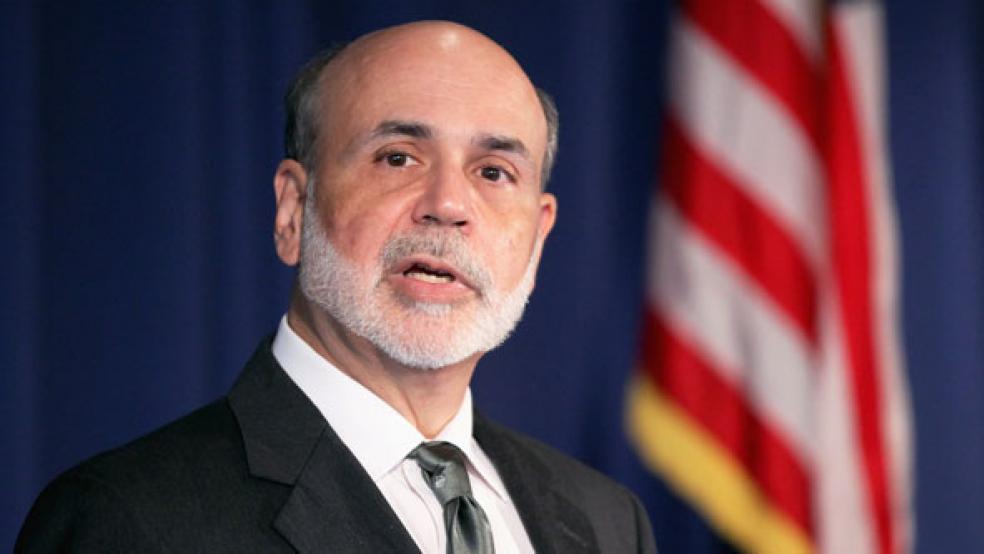The Federal Reserve Board clearly demonstrated on Wednesday that it could resist pressure from Capitol Hill. However, its ability to woo reluctant lenders and consumers to loosen their purse strings with lower long-term interest remains in doubt.
The Fed’s Open Markets Committee’s decision yesterday to launch another round of monetary easing was a stark admission that its previous prediction that economic growth would accelerate in the second half of the year is no longer operative. This time, acknowledging “significant downside to the economic outlook,” the Fed hopes to bring down long term interest rates by lengthening the time to maturity of government bonds in its portfolio.
One major worry is that the galloping European sovereign debt crisis, currently centered on Greece with Italy, but with Spain and Portugal waiting in the wings, will have a major impact on the U.S. economy, especially its banking sector. That’s just the first of the three major problems facing the economy as the nation heads into an election year. Second, the housing market remains in a tailspin, with new housing starts off another five percent in August. Home values have now fallen for five consecutive years, wiping out the only wealth held by millions of American families. The negative “wealth effect” from this trauma has caused many householders to rein in consumption, which accounts for 70 percent of economic activity.
The third factor holding back the economy is the ongoing impact of recession-level unemployment, which includes 14 million people looking for work, 6.4 million officially “discouraged” workers who are outside the labor force but would like to work, and the uncalculated millions who work at reduced hours and would like full-time work. Those lost opportunities translate into well over $1 trillion in lost income a year, which means fewer sales for every business that depends on robust consumer spending.
run out of bullets when it
comes to providing a major
stimulus to the U.S. economy.
Will a further reduction in long-term interest rates below their already historically low levels help? “It will help to preserve the status quo,” said Diane Swonk, the chief economist at Mesirow Financial, a Chicago-based financial advisory firm. “We’re in a growth recession, and that’s the optimistic scenario.”
The sad fact is the Fed has run out of bullets when it comes to providing a major stimulus to the U.S. economy. And financial markets immediately recognized that fact, even after the Fed announced its program of selling $400 billion of short-term government bonds and purchasing a similar amount of longer-term bonds (dubbed “the twist” by Wall Street pundits).
It was everything the market had hoped for. Yet the Dow Jones Industrial Average sank 283 points or 2.5 percent Wednesday, with virtually all the decline coming after the Fed announcement.
Part of the program increases the Fed’s purchases of mortgage-backed securities from Fannie Mae and Freddie Mac. Lowering home mortgage interest rates to well below 4 percent, say, could trigger another wave of refinancing, which will free up cash for increased spending by middle class households whose houses retain value and have good credit ratings.
now a distinct possibility.
But for the more than ten million Americans whose homes are now worth less than what they owe, it makes no financial sense to refinance at any rate. In fact, any setback to their economic fortunes – like a double-dip recession that increases unemployment – could cause millions more people to walk away from their mortgages, which in turn will only add to the huge glut of foreclosed houses that are continuing to depress housing prices.
A double-dip recession is now a distinct possibility. Republicans on Capitol Hill may not have succeeded in their strong-arm efforts to stop the Fed from launching another round of easing with a last minute letter to Fed policy makers, but their control of the House of Representatives ensures that a stimulus package along the lines proposed by President Obama two weeks ago has no chance of passage.
Most liberal economists believe that an ambitious stimulus package is exactly what’s needed at this point. While conservative academicians and think tanks produce studies claiming the February 2009 stimulus package that passed shortly after Obama became president was a failure, the reality is that the economy generated 1.5 million new jobs between October 2009 and May 2011, according to the Bureau of Labor Statistics. It usually takes about six months for a stimulus package to begin working, given the lag time between government passing a bill and its ability to get the new spending out the door.
Over the last three months, since Republicans took control of the House and imposed austerity in pursuit of a balanced budget on the economy, the nation has lost 152,000 jobs. The payroll tax cut and other tax breaks that were passed last December, appear to have failed.
to do is inflate the economy
in terms of nominal GDP.”
Given election year politics, with Democrats now accusing the Republicans of deliberating trying to sabotage the economy, some observers are predicting that the Fed may turn to extraordinary measures at its next meeting in November, possibly taking action to trigger slightly higher inflation. Wednesday’s Fed statement noted, “Inflation appears to have moderated since earlier in the year as prices of energy and some commodities have declined from their peaks. Longer-term inflation expectations have remained stable.”
“What the Fed wants to do is inflate the economy in terms of nominal GDP,” Bill Gross, the chairman emeritus of Pimco, the world’s largest bond investment company, fretted on CNBC. “I think we’ll see the Fed talking about targeting unemployment by November.”
Inflation is the greatest fear of bondholders, who are primarily interested in the real value of their yields and preserving the value of their bonds. Higher inflation decreases the value of both. But for underwater homeowners and unemployed workers, a little inflation might end the downward spiral in home values, stimulate refinancing and spur economic growth. Given Washington’s paralysis, it might be their only hope.


